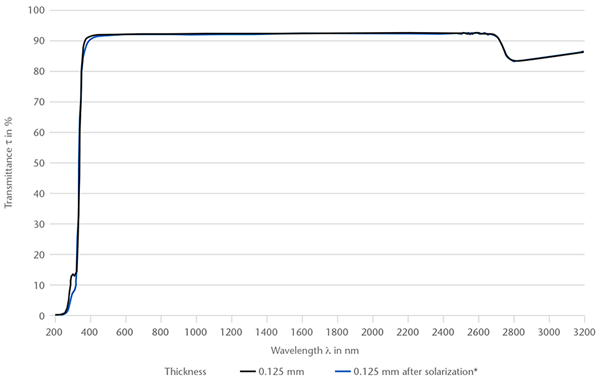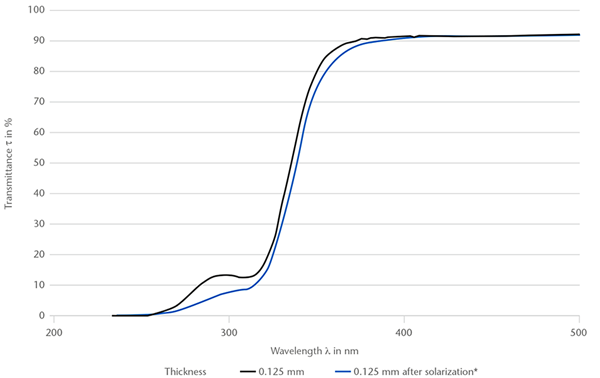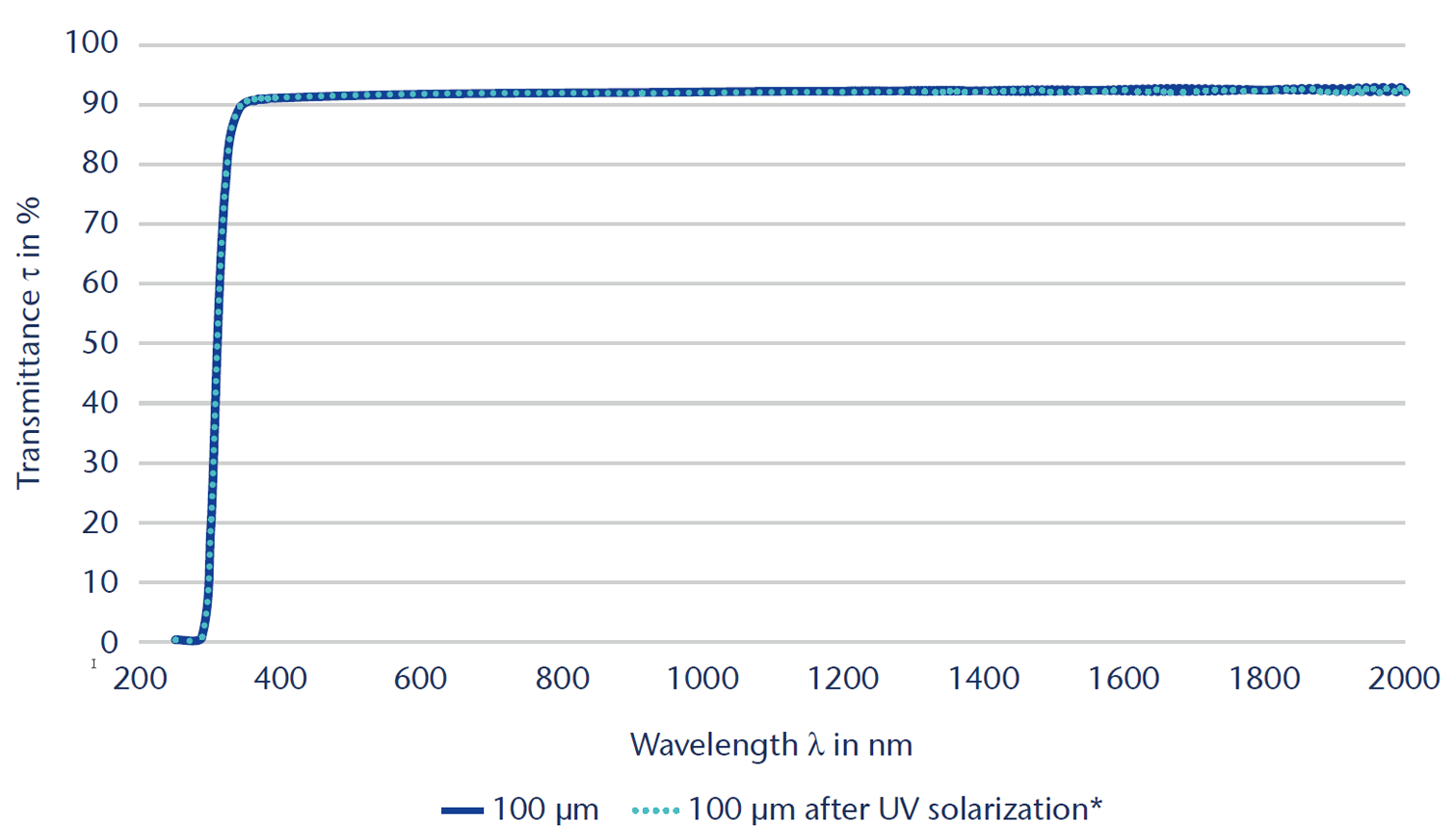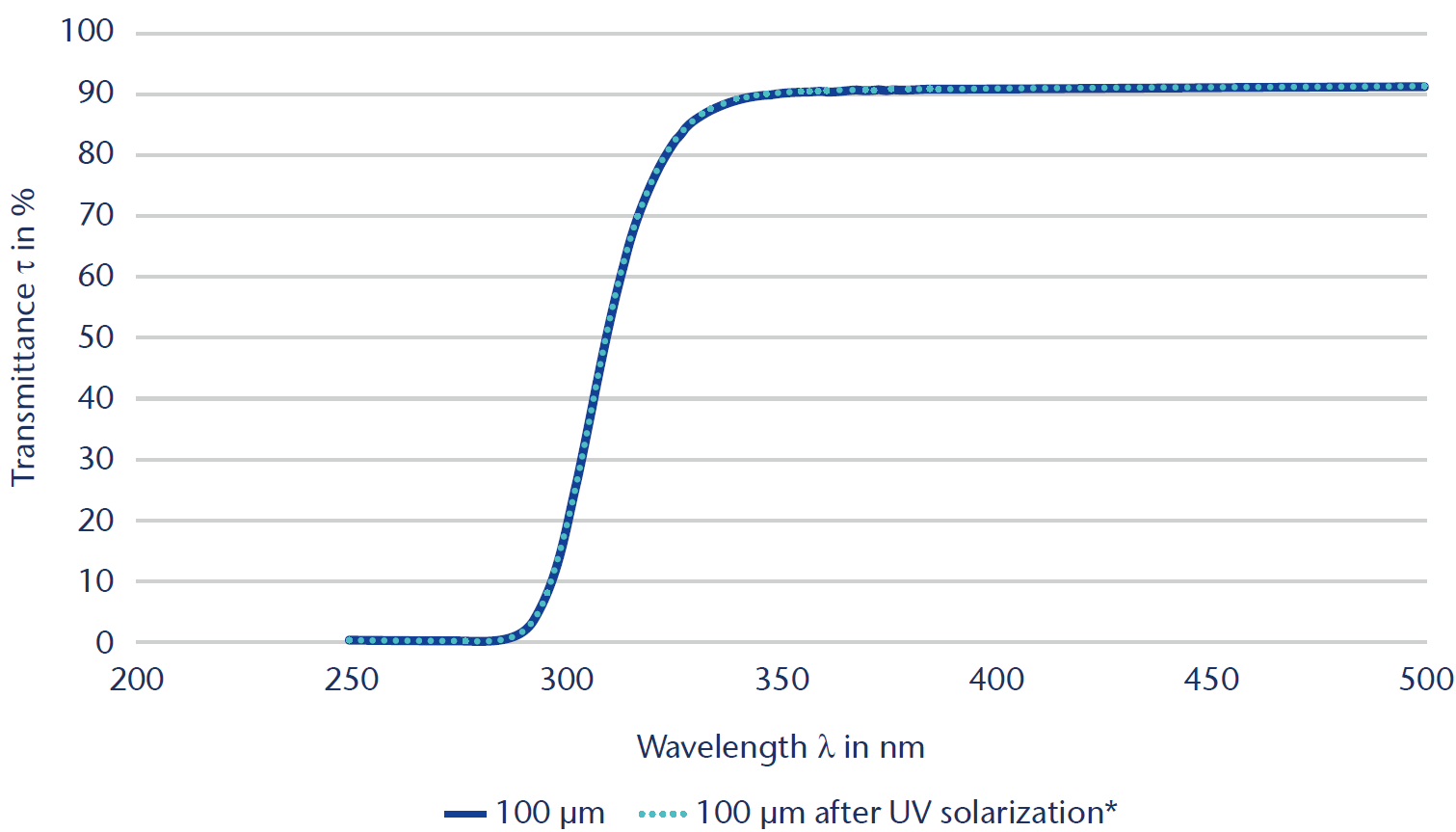Technical Details of Solar Cell Cover Glasses
Technical Details - Solar Glass 0787
| Optical Properties | Value |
|---|---|
| Refractive index* nd for cover glass (as drawn) | 1.5080 ± 0.003 |
| Total normal emittance εn of cover glass top surface at 25 °C |
≤ 0.86 |
| Thermal properties | Unit | Value |
|---|---|---|
|
Transformation temperature Tg
|
in °C | 568 |
| CTE (coefficient of thermal expansion) α | in 10-6 · K-1 (20 °C; 300 °C) |
8.5 |
| in 10-6 · K-1 (20 °C; 150 °C) | 7.9 |
| Mechanical Properties |
Unit | Value |
|---|---|---|
| Density ρ | in g/cm³ | 2.51 ± 0.05 |
| Young's modulus E | in kN/mm² | 70.0 |
| Poisson's ratio µ | 0.216 | |
| Breaking strength | Strength-optimized cutting process, details available on request | |
| Electrical properties | Value |
|---|---|
| Bulk resistivity ρD | > 1 ∙ 1011 Ω m (ν = 20 °C) |
Reference values of typical production quality
Transmittance values
Spectral transmittance


Technical Details - Solar Glass sphere
| Optical Properties | Unit | Value |
|---|---|---|
| Refractive index* nd | 1.5231 | |
| Edge wavelength λc (τ = 0.46) | in nm (thickness in mm) |
308 |
| Luminous Transmittance 𝛕vD65 | in nm (thickness in mm) |
91.8 (0.1) |
| Thermal properties | Unit | Value |
|---|---|---|
| Transformation temperature Tg | in °C | 557 |
| CTE (coefficient of thermal expansion) α | in 10-6 · K-1 (20 °C; 300 °C) | 7.2 |
| Mechanical Properties |
Unit | Value |
|---|---|---|
| Density ρ | in g/cm³ | 2.51 |
| Young's modulus E | in kN/mm² | 72.9 |
| Poisson's ratio µ | 0.21 | |
| Breaking strength | Strength-optimized cutting process, details available on request | |
SCHOTT® Solar Cell Cover Glasses are available as:
- Sheets
- Cut-to-size substrates
- Unpolished substrates and wafers
To find out more, please see the related products on the overview page.


